Updated: January 24, 2024- 9 min read
If you're going to drive strategy as a Product Manager, first, you need to fully grasp what 'strategy' means. Imagine a strategy as the answer to the question, "How do I make that happen?" It's a roadmap that outlines the steps you'll take to reach a specific objective. This principle applies to almost everything, from individual projects to overarching business goals.
Editorial note: This post is based on a talk by Asaf Altagar, Senior Product Manager at Salesforce, on Driving Strategy as a Product Manager and contains additional insights and examples from the Product School team. You can watch the webinar in full below.
Think of the strategy Apple used when launching the iPhone for instance. It was not just selling a product, but a lifestyle. The iPhone was positioned as a device that could revolutionize the smartphone industry, offering a unified experience of music, telephony, and internet browsing.
Vision vs strategy: the dream and the path
One common misstep in Product Management is conflating 'vision' and 'strategy.' While your vision symbolizes the dream, the end result you're aiming for, your strategy represents the actions and initiatives you'll undertake to bring that dream to fruition.
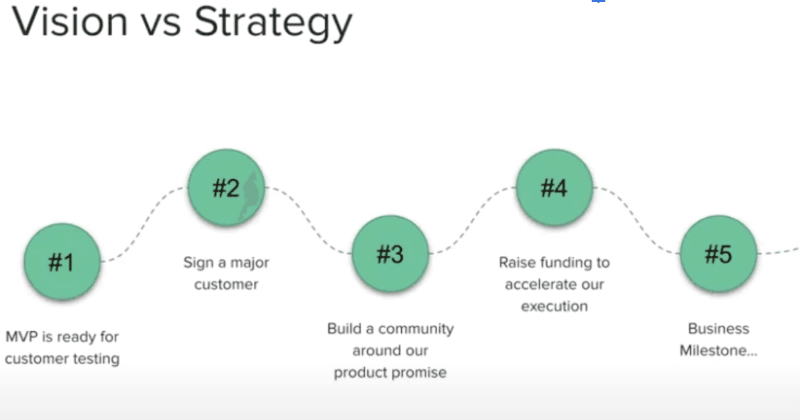
To illustrate this point, consider SpaceX's vision and mission. Their vision is to make life multi-planetary, but their strategy involves building reusable rockets, reducing space travel costs, and gradually constructing infrastructure on Mars. This means that you’ll need to make sure that your vision symbolizes the dream, while your strategy represents the path to realize that dream.
Crafting the perfect strategy
Understanding what a strategy is, is only the first step. Now, you’ll figure out how to formulate a strategy. When devising a strategy, you'll be addressing the questions: "What needs to happen? How can we efficiently plan for those things that need to happen?"
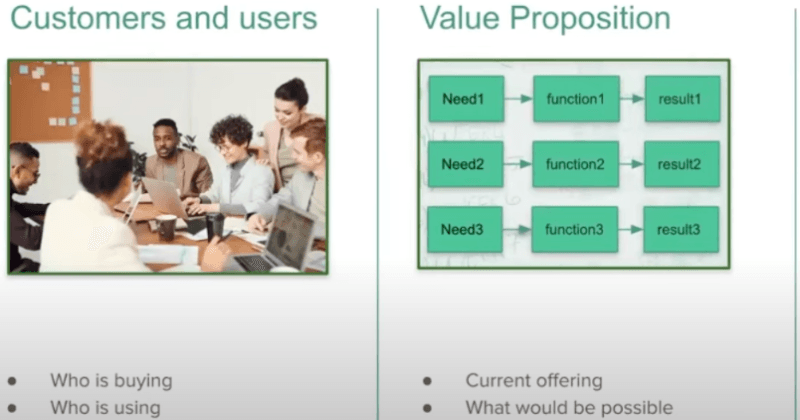
Consider these three key points:
Setting clear objectives
The first step in formulating a strategy is to pinpoint your objectives, ensuring they align with your overall business goals- where do you want to go? What do you hope to achieve?
When Google created Google Maps, its objective was to organize the world's geographical information to make it universally accessible. This clear objective served as the North Star for their strategy.
Assessing the current state
Regardless of your starting point, planning a strategy necessitates an assessment of the current situation. This includes examining the status of your brand or product, your operations, and your overall business. You need to understand which customer segments you currently serve and whether they can assist you in achieving your objectives. Evaluate your unique value proposition—is it delivering substantial value? Is it differentiated from other alternatives in the market?
For instance, when Netflix moved from DVD rentals to streaming, they evaluated their current state: technological advancements, changing user preferences, and the potential in offering original content. This assessment shaped their transformative strategy.
Defining strategic initiatives
After setting the destination and evaluating your starting point, it's time to decide the path to take. Determine the initiatives that will propel you toward your objectives. Let’s say your goal is business growth, then your initiatives might include attracting customers, converting leads into sales, and retaining customers through continual value delivery.
Namely, when Slack was conceived, they saw an opportunity in consolidating disparate communication channels into one platform. The initiatives included seamless integrations, intuitive UI/UX, and robust security protocols.
Assessing the timeline, identifying the players & acknowledging dependencies
Finally, you'll need to establish the timeline for delivering your strategic initiatives, identify the responsible parties, and acknowledge dependencies between functions or teams within your organization. Early identification of dependencies is pivotal for smooth strategy execution.
A good example is Amazon's transition from an online bookstore to a global e-commerce giant. This move wasn't instantaneous. It required a timeline, identifying key players in every new venture, and understanding how different parts of the business would depend on each other.
From vision to reality: executing strategy as a Product Manager
With a solid strategy in place, the focus shifts to the last crucial phase of driving strategy, the execution. As a Product Manager, the onus of actualizing the strategy rests largely on your capable shoulders. You're at the heart of the organization, playing a pivotal role in catalyzing and driving major portions of the strategic plan.
Your role as a Product Manager comes bundled with three core expectations when it comes to driving strategy:
Driving Alignment
Foster alignment by rallying stakeholders around your strategy. Your aim should be to secure buy-in, not mere compliance. To achieve this on your journey to strategic alignment you’ll need to increase awareness, engage your audience and build trust. As a Product Manager, it's your duty to breathe life into the blueprint of your plan or strategy, making it as tangible for your team as it is in your mind.
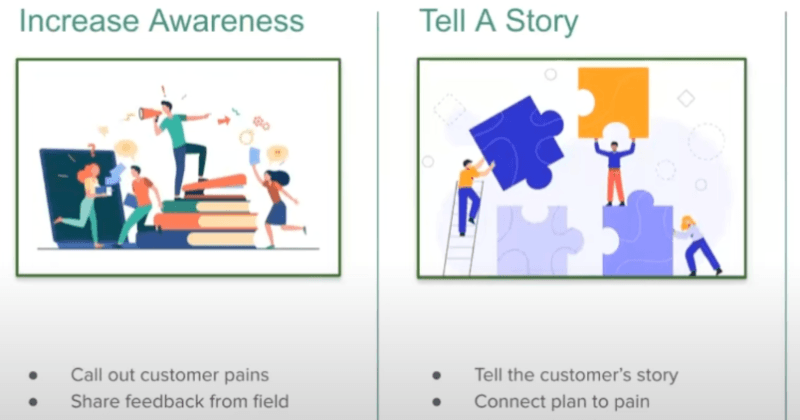
Boost awareness within your team using these methods:
Share Insights
Regularly email your team with new insights - thought-provoking, not overwhelming - illuminating the reasoning behind your strategy.
Casual Conversations
Discuss strategy informally with stakeholders. Promote open discussion and understanding in a relaxed setting.
Organize Data
In product management, well-presented data is powerful. Use visual aids to clearly convey your message.
The second step to drive alignment is to engage your audience with storytelling. As a Product Manager, you need to create a tale that resonates with your customers. Engage your audience by telling compelling, customer-centric stories:
Customer-First
In your product's story, the customer is the hero. Start with the customer, not the solution or technology.
Understand the customer journey
Your product should help the customer overcome challenges. Understanding their journey and challenges allows you to design effective solutions.
Visual Storytelling
Visual aids can make your story more engaging and understandable. Complement your narrative with relevant images.
Share customer success stories
Reinforce your strategy by sharing how your product has made a difference for customers.
The third pillar of your alignment strategy lies in fostering trust within your team. Trust is about creating a shared understanding that everyone is united in their decision to execute a specific strategy over others.
Here are some tips to help you build this all-important trust:
Use data
Use qualitative and quantitative data to validate your decisions, boosting confidence in your strategy.
Include developers in customer interactions
Giving developers direct insights into customer needs and feedback enhances transparency and aligns everyone with the customer's viewpoint.
Focus on customer value
Prioritize the value your strategy will provide to customers, not just your vision. Rally your team around the mission to serve the customer.
Delivering ongoing value
The second crucial expectation you shoulder as a Product Manager is delivering ongoing value. In this dynamic role, it's not enough to solely focus on one or the other; your aim should be to deliver both short-term wins and long-term value.
Gmail, for example, continues to add value to users by introducing new features like Smart Compose and scheduling emails, ensuring its product remains attractive and competitive.
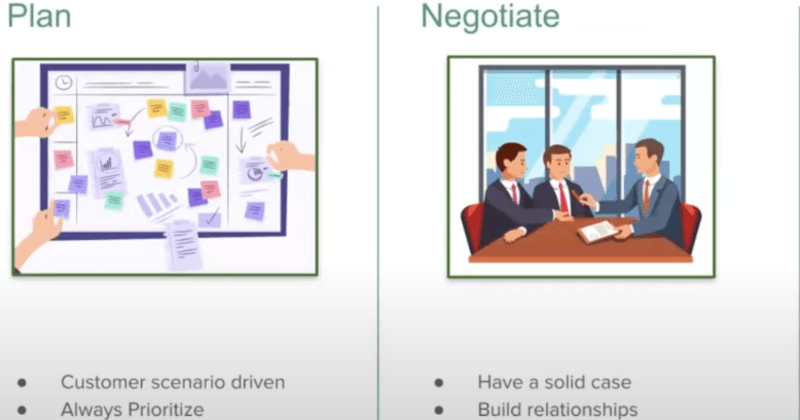
This process may require good planning skills, negotiation, or strategic trade-offs to maintain momentum and ensure your customers consistently benefit from your product.
Here are some tips to aid you deliver ongoing value:
Focus on the customer's journey
Understand your customers' scenarios, what triggers their actions, and their specific use cases. This helps ensure your product caters to their needs and experiences effectively.
Identify future dependencies
Spot these early and involve relevant teams at the planning stage. This prevents potential disruptions to your timelines and deliverables.
Regularly review data
Make reviewing product and market data a routine to seize opportunities and anticipate potential threats.
Use feedback
Listening to your users and stakeholders can guide product improvements and keep it relevant and valuable.
Consider finances
Keep an eye on the financial impact of your decisions to strike a balance between cost and revenue.
Stay adaptable
Be ready to adjust your strategy in response to changes in the market, customer needs, and internal factors to keep delivering value.
Keeping a pulse on progress
The third, but certainly not the least significant, expectation on your shoulders as a Product Manager is to continually monitor progress. What was a game-changer yesterday might have lost its impact today. A successful Product Manager not only recognizes these fluctuations but also stands ready to adapt to them.
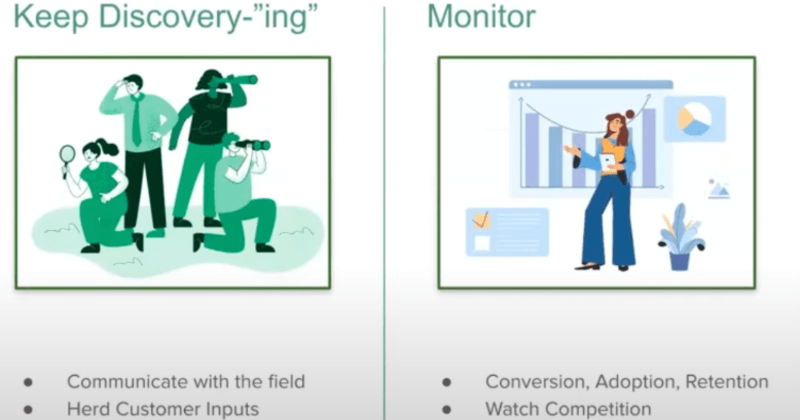
Here are some actionable tips to keep your finger on the pulse of progress:
Consistent KPI analysis
Dedicate time to regularly measure and analyze your key performance indicators (KPIs). You’ll understand how your product is performing and whether you are moving towards or away from your goals.
Eyes on Market Trends
Stay updated with trends and changes that could affect your product. This can provide early signals of potential opportunities or emerging threats.
Be open to strategy revisions
Sometimes, the initial plan might need adjustments to align with the changing scenario. Be open to revisiting and, if necessary, reshaping your strategy to make it more relevant and effective.
Promote transparent communication
Encourage open dialogue within your team and with your stakeholders. Transparent communication can reveal significant internal changes early on, allowing you to be proactive rather than reactive.
A good example of how keeping a pulse can be a game-changer is Facebook. The moment the social platform saw a surge in mobile usage it pivoted its strategy toward mobile-first design. By keeping a pulse on progress, it managed to stay relevant and competitive in a rapidly changing market.
The multifaceted role of a Product Manager: more than just strategy
Remember, as a Product Manager, your role extends beyond merely crafting strategy. You are the linchpin that connects the broader team to the product vision and the logic underpinning the strategic plan. You shoulder the responsibility of fostering alignment, ensuring everyone understands, and working towards a shared objective.
Moreover, your mandate includes delivering continuous value to the market. This often entails adept prioritization, skillful negotiation, and, occasionally, making challenging trade-offs to deliver the optimum value at the most opportune moment.
In essence, as a Product Manager, you act as the team's compass, guiding them through the complex terrain of product strategy, execution, and the ever-changing market dynamics. You are the beacon, illuminating the path to success amidst the intricacies of the product landscape. Always remember that your role is vital to the successful navigation of your product's journey from vision to value.
Learn more with Product School
Become a strategy master with our Product Manager Certification (PMC)™ designed by successful Product Managers to help you build end-to-end product development skills while offering the hands-on experience you need to lead product teams.
Discover PMC today, and take the first step towards becoming a strategic, successful, and influential Product Manager. Schedule a call today to find out more.
Updated: January 24, 2024





